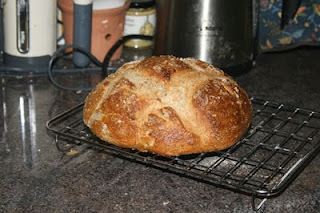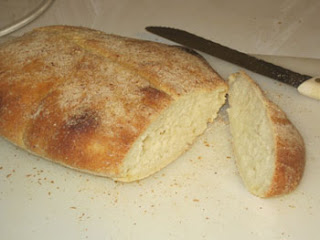I'm getting my mojo back for making bread, just in time for Christmas. Unfortunately, I'm losing it photographically.
This looks better than it looks, and is generally OK - a light crumb and a crisp crust. Here are the ingredients:
230 g strong wholemeal flour
170 g very strong white flour
40 g wholemeal rye flour
4 g salt
260 g water
1 tsp muscovado sugar
4 g dried yeast
1 glug of rapeseed oil added while kneading
I baked it on the stone at 240 for 20 minutes, then 220 for another 20 or so. No steam, and I left the fan on.
Actually, given that it's >50% wholemeal, it's surprisingly light. I had used mostly a folding method letting the dough rise through the afternoon.
What speculation can I make? I think the most important thing is the temperature. I really have to accept that I need the full force of the oven. I think the small amount of sugar helps to give a good crust. I also think I'm better off using a lower percentage of water than is orthodox - here it's 60%.
Marquise and Stardust and Math Mystery
4 hours ago

































